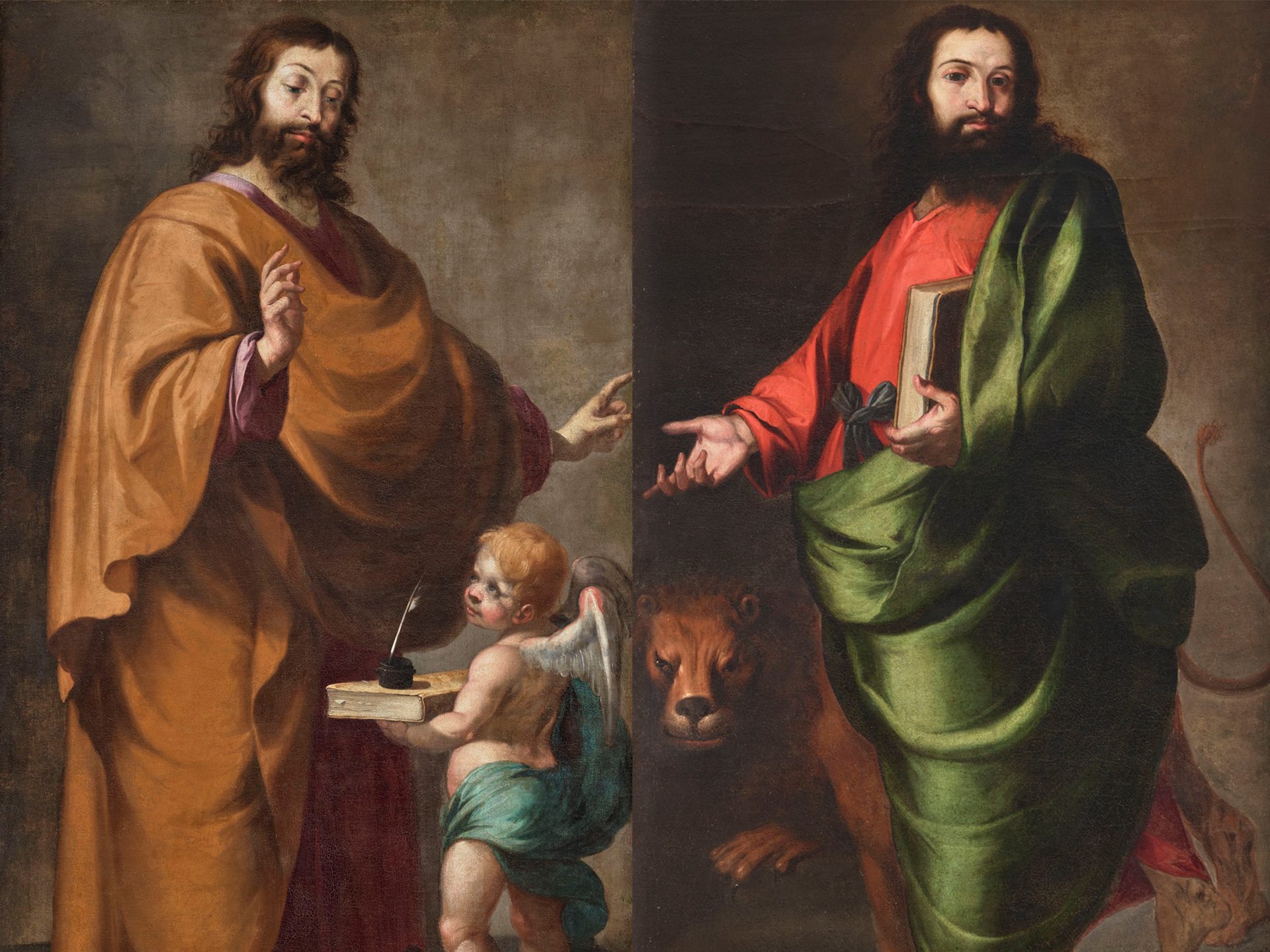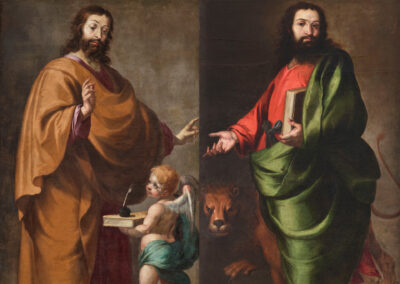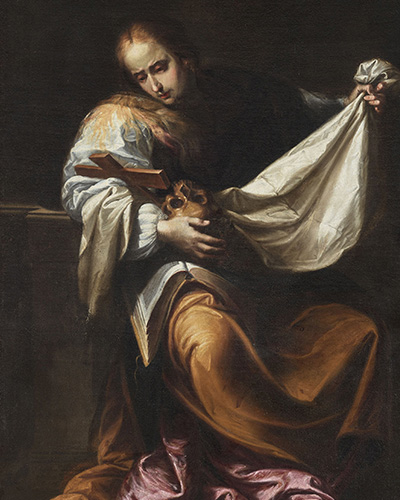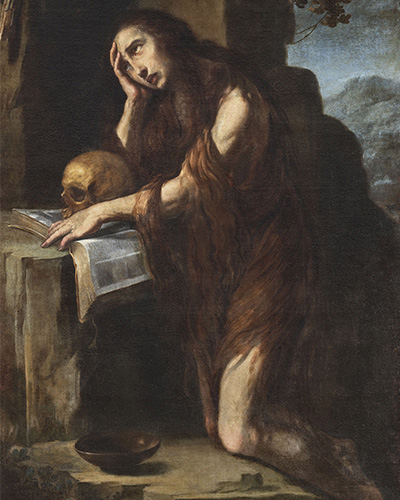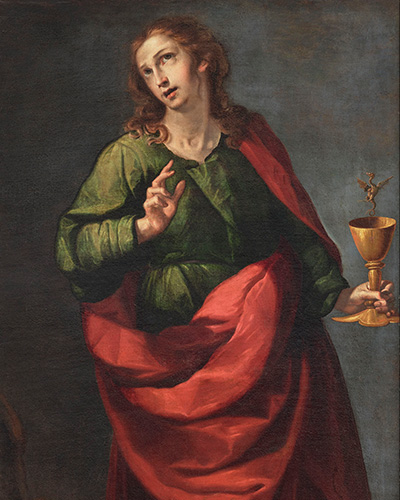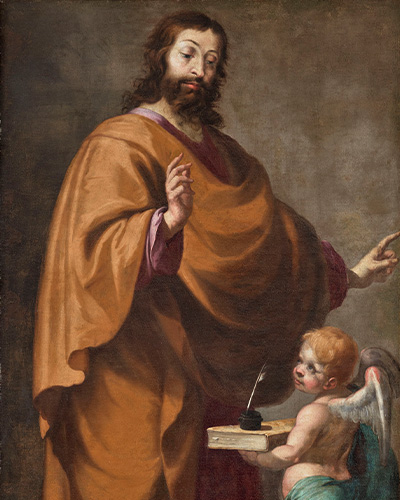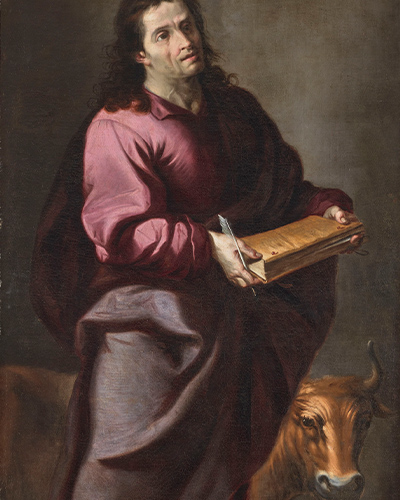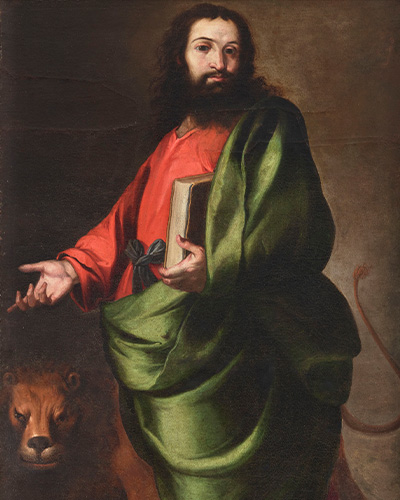This series is made up of six canvases depicting The four Evangelists and to the saints Mary Magdalene y Maria Egipciaca.
The two saints are signed and dated by Sebastián de Llanos Valdés in 1658, an authorship and dating that, in a recent book, Enrique Valdivieso (2023) considers can be extended to the whole series as they are clear works by the Sevillian artist and are identical in size and format.
As for the former, perhaps because he was commissioned to paint at the same time the two saints that popular piety identified with meditation and penitence, Mary Magdalene and Mary of Egypt, Sebastián de Llanos Valdés can allow himself, in both canvases, an exercise in iconographic propriety and orthodoxy, freeing the saint who in the Gospels anoints the feet of Jesus and witnesses the Resurrection, Mary of Magdala, from the elements which, since the late Middle Ages, had been transforming her into a penitent hermit by assimilating the Egyptian ascetic who, repentant of her licentious life in Alexandria, withdraws to the desert to do penance. In this way, the artist was able to separate in each of the canvases the representation of two essential values for the Counter-Reformation church which, in the model of the Penitent Magdalen, had tended to merge into a single iconography: meditation and penance.
The four Evangelists are depicted full-length, standing, in a similar solemn pose and designed to be counterpoints in colour and dynamism, in pairs, Saint Matthew and Saint Mark, Saint Luke and Saint John, the canonical order of the Gospels. In their monumentality, J. A. Urbina (2012) sees in their monumentality "leferences to Herrera el Viejo […] tinged by the influences of both Zurbarán and the Genoese Bernardo Strozzi and Giovanni Andrea de Ferrari, from whom he takes his tenebrist lighting".
The series does not come from any of the collections that made up the Casa de Medinaceli collection, but was acquired in 2002 from the Medina Vilallonga family.

